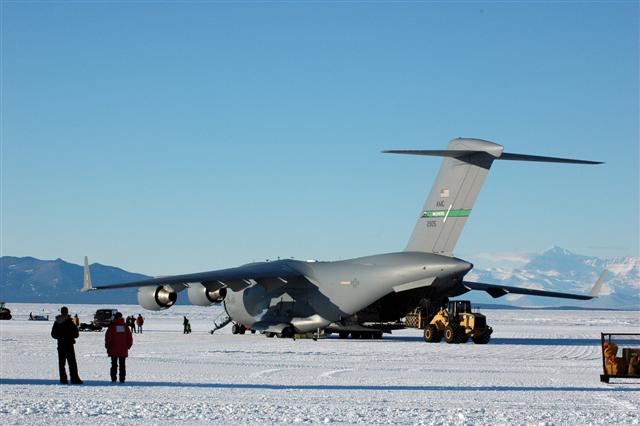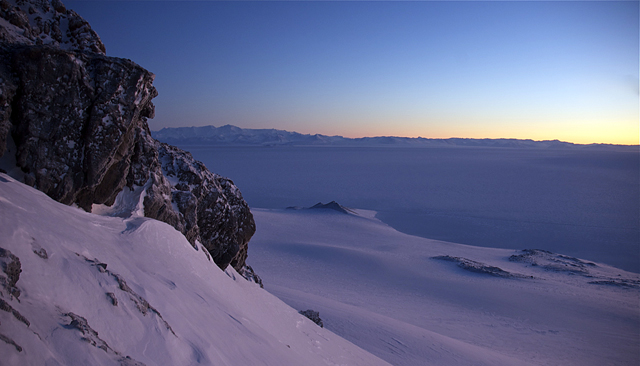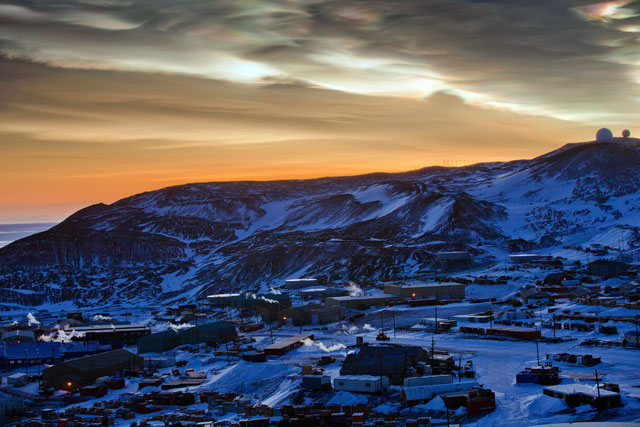Here comes the sunFirst light at McMurdo Station heralds the beginning of Winfly seasonPosted August 19, 2011
Updated August 22, 2011
Today is a very special day here at McMurdo Station Winfly is typically a six-week long period beginning in August when the U.S. Antarctic Program The first flight, carrying nearly 120 passengers aboard a U.S. Air Force C-17 Globemaster III from Joint Base Lewis-McChord Over the next month and a half, McMurdo will prepare for all sorts of summer science operations. Excursions out onto the sea ice will begin, including roadway flagging, ice runway preparations, ice-crack safety inspections, and also science dives under the ice. A couple of science groups will arrive during Winfly and work out of the fully prepared Crary Science Laboratory. Among the groups is a team led by Adam Marsh This is probably one of the most interesting times of the year to be at McMurdo, because the average temperatures typically drop to the coldest levels of the year. It gives you the opportunity to enjoy the strongest feeling of being on the “harsh” continent. One of the highlights of Winfly is that the sky frequently becomes adorned with the refracted apparitions of very high, sweepy cloud phenomena called nacreous clouds. These clouds take on a rainbow-like luminescence, as the low-angle sunlight passes through the ice crystals contained high within. The beauty is a double-edge sword. The clouds have been implicated in the atmospheric processes that cause ozone depletion, which also begins at this time of the year. What makes Winfly most special is that you can really feel the return of the science mission here. Science is our bread and butter at McMurdo Station, and it’s what we’ve been preparing for all winter long. The return of the sun illuminates that fact.
|



For USAP Participants |
For The Public |
For Researchers and EducatorsContact UsU.S. National Science FoundationOffice of Polar Programs Geosciences Directorate 2415 Eisenhower Avenue, Suite W7100 Alexandria, VA 22314 Sign up for the NSF Office of Polar Programs newsletter and events. Feedback Form |




